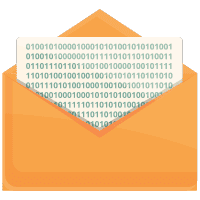Embarking on the thrilling journey to become a programmer is a decision full of possibilities, but the route you take can significantly shape your future and your experience.
As you stand at the crossroads, you are faced with a crucial, possibly life-changing question: should I embrace the self-taught approach and master the skill myself, or should I opt for the traditional path of a formal degree?
This exploration will help you uncover the details of the DIY programmer; it will help you navigate the pros and cons of self-learning and formal education to determine the path that best aligns with your future career.
Let’s dive into our guide, in which I will make it easy for you to understand both approaches, so you can confidently pick the adventure that suits you the best.
- DIY Adventure: Taking Charge of How You Learn
- Hands-On Experience: Building Skills through Real-World Projects
- Cost-Effective Learning: Making Programming Education Accessible to All
- The Degree Route: Navigating Structured Education
- Self-Taught vs Degree: Time Commitments
- Navigating Your Coding Journey: Harmonizing Passion and Practicality
#1 DIY Adventure: Taking Charge of How You Learn
In the DIY world, you are the boss of your learning journey. You decide what subjects to learn. If you want to focus on making websites or explore cool tech like AI? It is your call.
Imagine it being like your own learning playlist, according to your interests and goals. Being a self-taught coder means you can check out all kinds of learning stuff—online videos, forums, or any other learning platform like Codecademy, Udemy, etc.
This flexibility allows you to choose resources that resonate with your preferred learning style, ensuring a comprehensive educational experience.
One of the significant advantages of the self-taught approach is the ability to control the pace of your learning. Whether you go for a deep dive into a particular topic or go for a more gradual approach, you decide the speed.
This personalized learning journey accommodates individual preferences, providing the freedom to structure your education according to what you want.
#2 Hands-On Experience: Building Skills through Real-World Projects
In the world of hands-on experience, the focus is practicality. You won’t just be reading about coding; you will be doing it in real-time.
Project-based learning involves tackling real-world challenges, like building a website. It is more of a hands-on approach that enhances your understanding by applying theoretical knowledge to projects.
Picture this as a journey of problem-solving. By doing hands-on projects, you encounter various coding challenges.
It is not just about writing the code; it is about figuring out the solutions, fixing the errors, and enhancing your problem-solving skills.
As you involve yourself in practical learning, each project becomes a building block for your portfolio, and your portfolio is a powerful tool when entering the job market.
Don’t think that you won’t have opportunities to work on real-world projects if you start self-learning.
You can have clients to build websites and applications for them or maybe help them with other programming stuff. There are many freelancing platforms waiting for you!
The academic path in universities also allows you to work on different real-world projects, but they are mostly the same as previous years.
Anyway, you get to learn a lot throughout your degree, but it might not be as much as what you get with self-learning.
#3 Cost-Effective Learning: Making Programming Education Accessible to All
The beauty of cost-effective learning lies in the accessibility of online resources. Many learning materials, tutorials, and courses are available at little to no cost.
The digital world provides a wealth of knowledge, ensuring that newbie programmers can access educational content without paying a high price.
Cost-effective learning acts as a bridge, breaking down financial hurdles by allowing people from diverse backgrounds, regardless of their economic status, to pursue their programming education.
Traditional education comes with high tuition fees and many other expenses. If we talk about online learning, the resources are easier to access, and you can do self-teaching.
People can acquire valuable skills without taking on much financial burden, making programming accessible to a broader audience.
#4 The Degree Route: Navigating Structured Education
If you want to get a degree, the journey is comprehensive. A structured curriculum ensures a well-rounded education, covering fundamental principles, advanced concepts, and specialized topics.
From algorithms to SDLC, the curriculum provides a thorough exploration of the field.
Enrolling in a degree program opens doors to guidance from seasoned educators. These professionals are very knowledgeable and experienced.
Their expertise assists the learning experience in going smoother and provides students with a foundation and a deeper understanding of complex concepts.
In the academic environment, students benefit from their peers. The degree path will help you collaborate with your peers on group projects and engage in problem-solving.
#5 Self-Taught vs Degree: Time Commitments
Time commitment is a key factor to consider before starting your learning journey.
A university will require 4-5 years for a degree and you would have to attend all the classes regularly.
On the other hand, you manage you pace while self-learning. You have the authority to decide if you want to study for one hour a day or more, if you want a rest or not, if you want to learn multiple things at once or not, and so on.
In short, if you don’t have any issues with time commitment, then getting admission in a university will do no harm.
However, if you are already working and want to learn programming for a side-job, then I suggest going the self-learning way.
#6 Navigating Your Coding Journey: Harmonizing Passion and Practicality
Your coding journey is as individual as you are. It is about aligning your learning style, whether DIY or through a degree, with your career goals.
You need to recognize how each path can contribute to your goals and choose the one that aligns with your ambitions.
If you want to quickly learn specific programming and start working as a freelancer, you would prefer self-learning. Doing a few courses will take you on your way.
In the world of DIY programming, opportunities are diverse. It is not just about learning to code; it is about exploring multiple paths within the tech journey.
However, if you want to have a degree and a proper academic career, then getting admission in a university is the way to go. This way, you’ll also have the chance to apply for Masters and PHD in the future.
Besides, you can have your self-learning on the side as well.
So, whether you choose the formal degree or the DIY route, embracing the challenges with enthusiasm and staying dedicated to your learning journey is essential.
DIY or Degree? Decide Today!
In the world of programming, the choice between being a self-taught coder and pursuing a degree is a one-size-fits-all choice. It depends on how you want to learn, your career goals, and your situation. Whether you choose the freedom of self-teaching or the systematic approach of a degree, what matters at the end of the day is your dedication and passion.




